Last Updated on March 26, 2024
Have you heard of No Mow May? This up-and-coming movement encourages homeowners to let the flowers in their lawns grow in order to support pollinators with food sources early in the season. Interested in mowing less and helping the bees? Here’s what to know about No Mow May and how to make your yard better for pollinators and the environment all season long.

WHAT IS NO MOW MAY?
Created by U.K. nonprofit Plantlife in 2019, No Mow May encourages homeowners to skip cutting their lawns during the month of May, when grass-cutting season tends to begin.
Why?
Because when we mow down dandelions and other early flowers, we leave pollinators without food. No food means no pollinators, which is bad for everyone, because without pollinators many important fruits and vegetables can’t produce food for us.
Not mowing in the month of May is one small step we can take to combat the damage we’ve been doing to pollinators for decades. Populations have plummeted as we’ve destroyed their habitats and poisoned them with pesticides. Feeding them when they’re at their most vulnerable in early spring can help slow their decline.
WHAT PROBLEM DOES NO MOW MAY ADDRESS?
There are 40 million acres of grass lawn in the United States alone, and those flower-less lawns offer no food for bees or other pollinators emerging in the spring before most garden flowers have begun to bloom.
In addition to the crisis in European honeybee populations, The Center for Biological Diversity reports that native bees in North America have also experienced precipitous declines.
Allowing our lawns to host flowers in early spring means these important insects can find food sources early in the season when there isn’t much else to eat.
When researchers at Lawrence University studied the insect life of unmown lawns during Appleton Wisconsin’s No Mow May effort, they found five times as many bees as in areas that were mowed. Numbers were greater in lawns with larger unmown areas.
The more lawn you and your neighbors leave unmown this May, the more pollinators you can feed.
BENEFITS OF NO MOW MAY
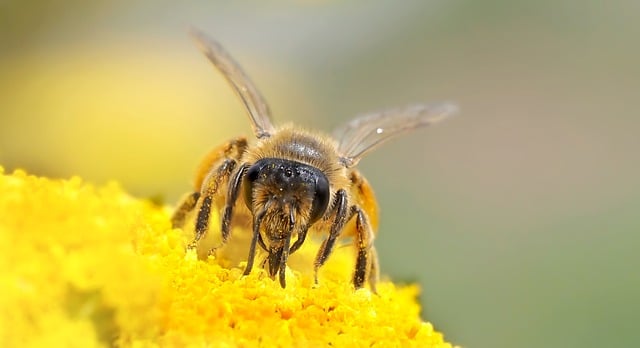
The focus of No Mow May is on providing food for pollinators when it tends to be most scarce, but there are other benefits as well.
Remember those 40 milllion acres of lawn? Most are maintained with gas-powered mowers and staggering amounts of chemical pesticides and fertilizers.
Researchers estimate that American homeowners use 800 million gallons of gasoline powering their mowers each summer, pouring 16 million pounds of carbon into the atmosphere.
They also spill roughly 17 million gallons each season, 50% more than the infamous Exxon Valdez oil spill.
In addition to all that carbon pollution from gas, Americans dump 90 million pounds of fertilizer and 78 million pounds of pesticides in their efforts to maintain their manicured patch of green. Not only do these products take energy to produce and ship, but when they break down on our lawns they release greenhouse gases far more potent than carbon dioxide.
In addition to polluting our air and water supplies, the climate-changing gases from fertilizers are contributing to weather instability that further endangers pollinators as well as humans increasingly affected by extreme heat, drought, wildfires, and dangerous weather events.
Skipping this cycle of pollution-generating lawn care as much as possible is a win for the planet.
JOIN THE NO MOW MOVEMENT & BRING YOUR COMMUNITY ALONG
While skipping mowing in your own yard for a month is a step in the right direction, getting your whole community involved multiplies the effect you can have. When hundreds of yards in a community pledge to help the pollinators, you’ve gone from creating a tiny refuge for pollinators to a whole network of habitats.
Better still, you’ve helped raise awareness of the environmental effects of lawn care choices in your community. As more people realize the damage standard practices cause, more of them will shift toward ecological landscaping practices.
The Xerces Society, a nonprofit dedicated to protecting pollinators, sponsors a program that lets communities sign on as Bee Cities, cities pledging to plant more natives, reduce pesticide use, and preserve nesting sites for pollinators.
Worried about neighbors complaining when you don’t mow for a month? The Xerces Society has created a free printable sign you can put in your yard so passersby know all those dandelions are being left to bloom out of concern for the pollinators, not slovenliness. You can get your No Mow May sign here.
Read more about using your yard to support pollinators in Kim Eirman’s The Pollinator Victory Garden. (Get through Bookshop here.)
BEYOND NO MOW MAY: SUPPORTING POLLINATORS ALL SEASON LONG
While No Mow May is helping to raise awareness of the impacts of what we do in our yards, one month out of the year isn’t going to save the pollinators.
What can you do to make your yard good for pollinators all year long? Glad you asked!
There’s lots you can do to make your yard far more eco-friendly and hospitable to pollinators.
1. LIMIT THE LAWN AND ADD NATIVE PLANTS
Start by getting rid of much as lawn as you possibly can. You can replace lawn you’re not using with more eco-friendly choices, whether it’s with no-mow grass alternatives, or a planting of low-maintenance native perennials.
You can also create a flowering bee lawn, a lawn you mow infrequently that’s dotted with flowers to provide food and habitat for pollinators.
A non-profit called Homegrown National Park aims to spur homeowners to convert some of their lawns to native plantings, with the goal of 20 million acres converted to habitats that can support native pollinators and other wildlife. You can find out how to participate and support their work here.
If you love culinary and medicinal herbs, be sure to check out these ground cover herbs as you consider what to plant in place of lawn
For the grass lawn you do keep, try mowing less often and setting the blade of your mower higher, which will allow lower-growing plants to flower and also should reduce your need to water.
Encourage and plant clover, which will flower below the level of your mower blade. If you like foraging medicinal plants, here’s what to know about edible clover, and here’s where you can get seeds for Dutch white clover and lower-growing microclover.
You can plant a whole season of food for pollinators by choosing plants that bloom early, late, and in the middle of the season. The Xerxes Society has useful plant lists organized by bloom time for each region that can be found here. Click your region in the right sidebar and then expand the “Plant Lists” and look for the link to pollinator plants in your area. Here’s the one for the Great Lakes region as an example.
2. SKIP THE PESTICIDES
In addition to providing food and habitat for pollinators, we have to be sure we’re not poisoning them. That means skipping chemical pesticides, as well as some natural products that may kill troublesome garden pests but also hurt pollinators.
Here is a very thorough explanation from Michigan State University detailing which natural pesticides to use when needed and how to apply them so as to cause the least possible harm to pollinators.
3. RETHINK FALL CLEANUP
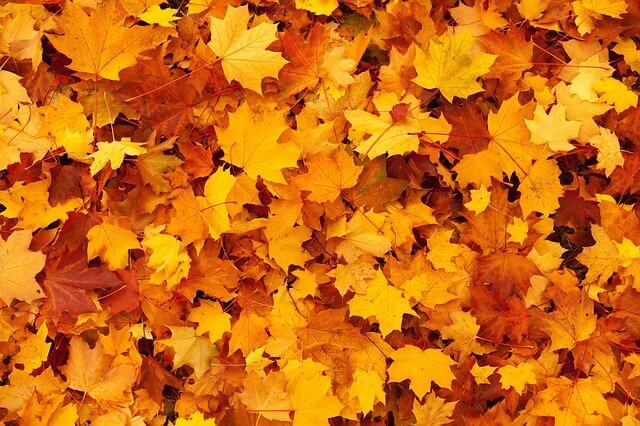
The Xerces Society emphasizes that providing food for pollinators, while important, isn’t all there is to supporting them. Making sure pollinators have places to nest and overwinter is crucial to their survival as well. According the the Xerces Society, “The availability of nesting and overwintering habitat is one of the most important factors influencing populations of native bees and other beneficial insects.”
In fall, resist the urge to “tidy” your yard. Nature isn’t tidy! Leaving the dead stems and fallen leaves for the winter gives those pollinators you’ve been encouraging a place to live for the colder months.
The Xerces Society has the following recommendations for making your yard hospitable to overwintering pollinators:
Leave the Leaves
Fallen leaves are a favored shelter for pollinators to overwinter. Rather than rake them all up in fall, leave them on your flowerbeds till spring.
If you have a grass lawn, you can leave a thin layer of leaves without damaging the turf. Rake up excess leaves onto your perennial beds, and they’ll help protect your plants from spring frosts.
Save the Stems
The hollow stems of raspberries and other perennials serve as homes for the larvae of a number of pollinators, such as carpenter bees, while many beneficial insects lay eggs in the stems of perennial plants.
Rather than chopping everything down in the fall, leave your stems in place to provide both winter interest and homes for next season’s pollinators.
When you do finally cut back dead stems, the Xerces Society recommends cutting them at varying heights to provide different-sized holes for insects to use.
Add the cuttings to your brush pile, and insects can make use of them there as well.
Build a Brush Pile
A pile of sticks and small branches can provide a home for numerous beneficial insects and wildlife like chickadees and other songbirds.
Find more details about these and other pollinator-friendly strategies in this excellent publication from the Xerces Society.
Think you may try No Mow May? What steps have you taken to make your yard more pollinator-friendly?
Pin to save this info on No Mow May!
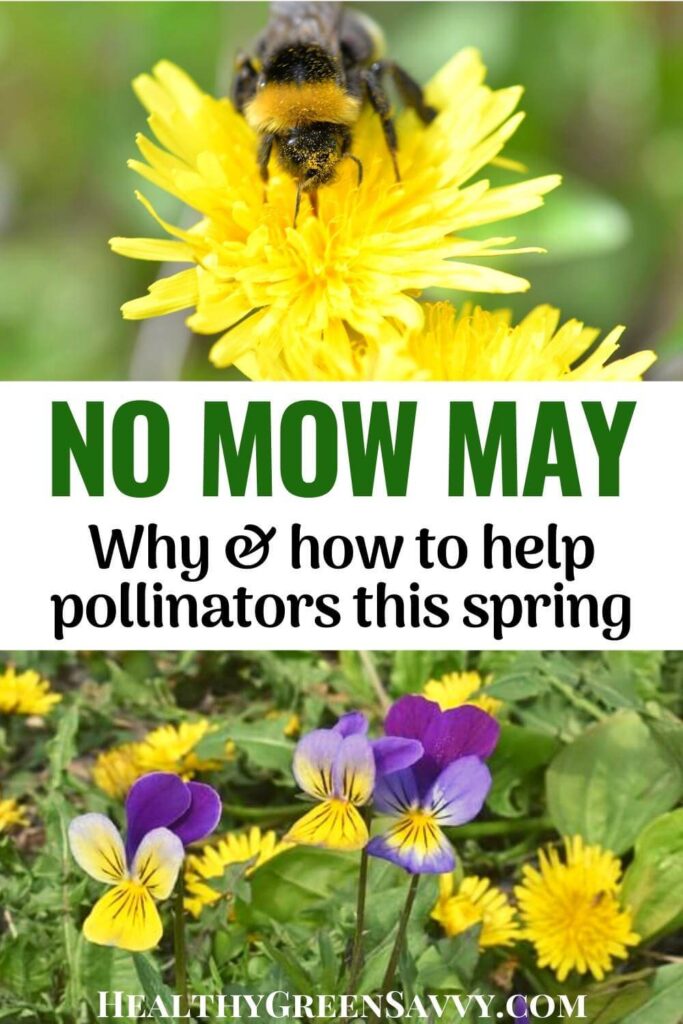
Additional photo credits for cover and pin: Alexas_Fotos, HOerwin56, Сергей Корчанов

Susannah is a proud garden geek and energy nerd who loves healthy food and natural remedies. Her work has appeared in Mother Earth Living, Ensia, Northern Gardener, Sierra, and on numerous websites. Her first book, Everything Elderberry, released in September 2020 and has been a #1 new release in holistic medicine, naturopathy, herb gardening, and other categories. Find out more and grab your copy here.
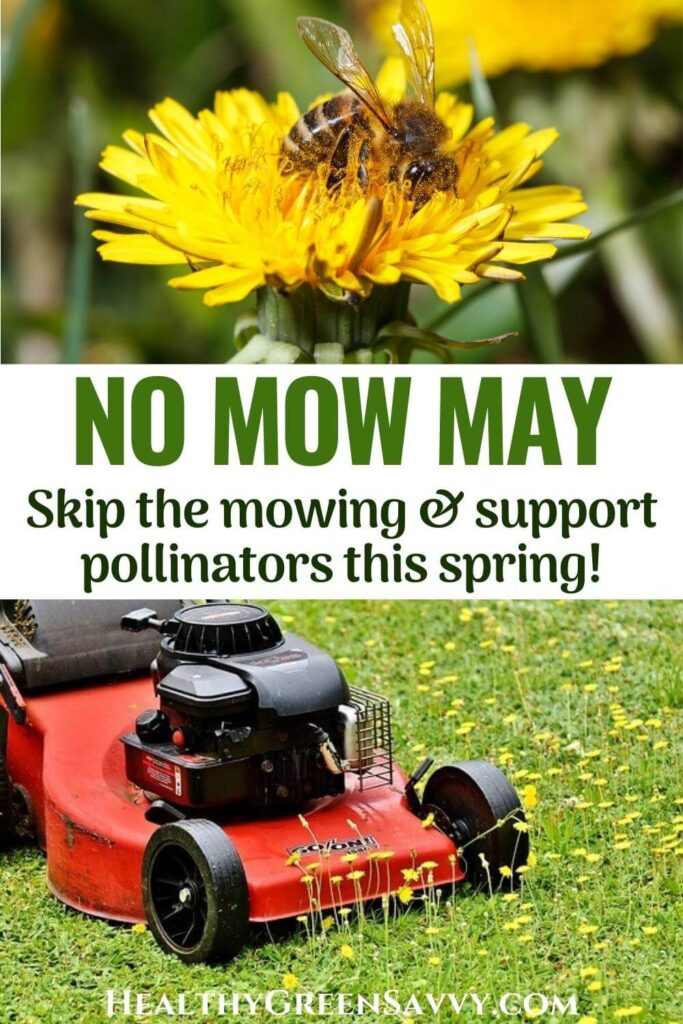
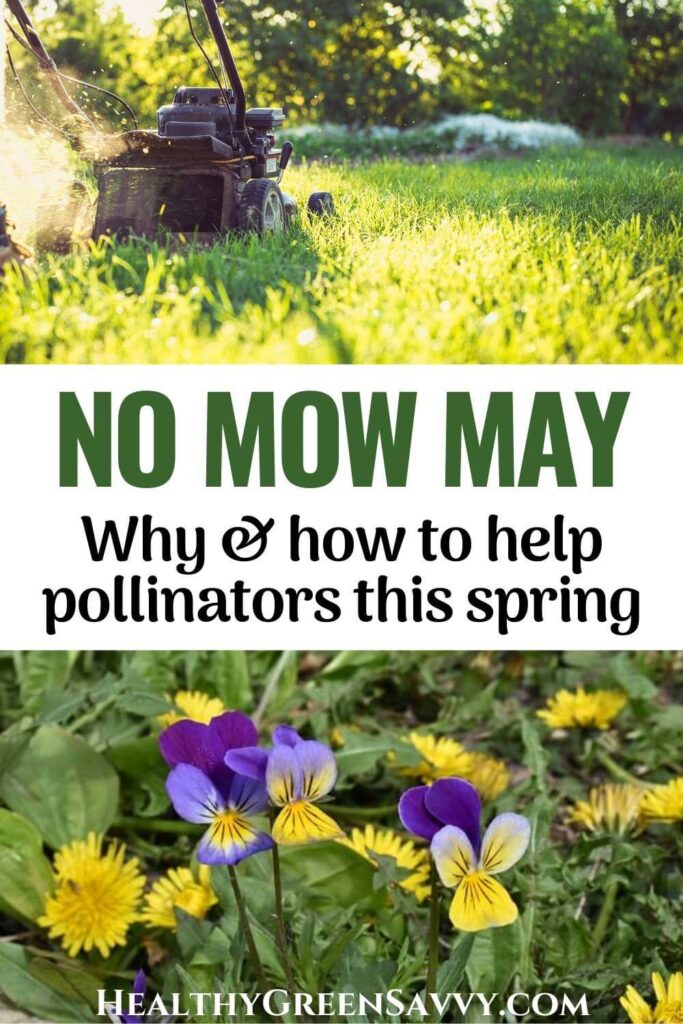
 Hi, I'm Susannah, a garden geek, energy nerd, and fan of healthy food and natural remedies. Need some simple, practical solutions for living healthier and greener? You've come to the right place! More about me and my green projects
Hi, I'm Susannah, a garden geek, energy nerd, and fan of healthy food and natural remedies. Need some simple, practical solutions for living healthier and greener? You've come to the right place! More about me and my green projects
Leave a Reply